Trail running brings a thrilling connection to nature, pushing your physical and mental limits. And as passionate trail runners know, conquering rough terrains demands the right gear.
These purpose-built companions offer optimal traction, enhanced stability, and better protection, ensuring you can tackle challenging trails with confidence and agility.
But wait; you have no idea how to buy trail running shoes. So, join us as we unearth the secrets of selecting the ideal pair to enhance your running experience on nature’s untamed playground.
Understanding Trail Running Shoe Anatomy
Understanding the nuances of trail running shoe anatomy ensures you find the perfect match for your adventurous excursions.
These specialized shoes are crafted to tackle rough terrains and offer the necessary support and protection for an exhilarating experience. As such, every trail runner needs to understand its anatomy.
Let’s dive into its key components.
Outsole
The outsole is the outer layer of the shoe’s sole, responsible for grip and traction on various surfaces. Look for rugged, multi-directional lugs for excellent traction on mud, rocks, and loose terrain.
Midsole
The midsole provides cushioning and support to absorb impact during the run. Trail shoes have firmer midsoles than road running shoes to enhance stability on uneven ground.
Upper
The shoe’s top part offers a secure fit, so opt for durable and breathable materials that keep debris out while allowing air circulation to keep your feet cool.
Heel-to-Toe Drop
This feature refers to the difference in height between the heel and forefoot. Trail shoes generally have lower heel-to-toe drops, promoting a more natural foot strike on varied terrains.
Traction and Grip
Trail running shoes often have specialized rubber compounds on their outsoles for optimal grip and traction, ensuring a firm foothold on challenging surfaces.
Toe Protection
A reinforced toe cap shields your toes from rocks and roots, safeguarding them against potential injuries. With one, you can finally run fearless, knowing your feet are shielded from potential injuries on the trails you love.
Breathability and Waterproofing
Breathable uppers ensure blissful comfort during those epic long runs, while waterproof options shield your feet from water and mud during wet adventures. With this combination, you can stay dry, stay comfortable, and confidently conquer the trails.
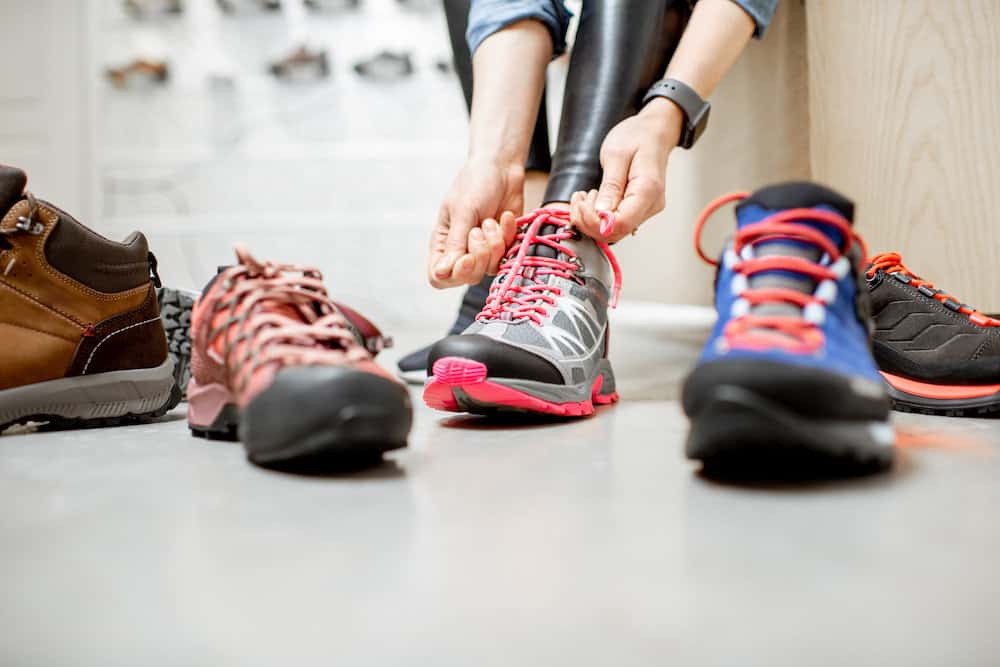
Assessing Your Running Style and Needs
Assessing your running style and needs is crucial when buying trail running shoes, as it directly impacts your comfort, performance, and safety on rugged terrains. Here’s why:
Foot Pronation
Understanding your foot pronation, neutral, overpronation, or supination helps you select shoes with the right stability and support. This minimizes the risk of injuries and maximizes your running efficiency.
Terrain Considerations
Different terrains demand specific shoe features. Shoes with aggressive traction suit rocky paths, while those with mud-shedding properties excel in muddy conditions. Technical terrains require shoes with enhanced stability and protection.
Distance and Duration of Runs
For longer runs, shoes with ample cushioning provide better comfort and impact absorption, reducing fatigue and potential injuries during extended trail adventures.
Weight and Durability Preferences
The shoe’s weight can affect your running speed and endurance, so choose a balance between protection and lightness. Durable shoes withstand rough conditions and maintain performance over time.
Weather Conditions
Weather-resistant or waterproof shoes are essential for wet and unpredictable weather, keeping your feet dry and comfortable during rainy or snowy trail runs.
By assessing these factors, you ensure your trail running shoes complement your unique running style and meet the demands of the diverse and challenging terrains you’ll encounter.
A well-matched pair of trail running shoes becomes your trusted companion, empowering you to embrace the great outdoors with confidence and passion for your beloved trail running adventures.
Choosing the Right Fit
Choosing the right fit for trail running shoes is paramount for a rewarding and injury-free trail running experience.
A well-fitted shoe ensures optimal comfort and minimizes the risk of blisters, hotspots, and foot pain. It enhances your performance by providing a stable and secure platform for every stride, boosting your confidence on challenging terrains.
Here’s what you need to do to ensure you choose well-fitting shoes:
- Consider the Brand’s Sizing Guidelines: Each brand may have slightly different sizing standards, so rely on their guidelines to find the right size. Don’t assume your regular shoe size will apply across all brands.
- Trying Shoes With Running Socks: Wear the same type of running socks you would use on the trails when trying on shoes. Doing so simulates the actual fit during your runs and ensures you get the right size with the socks’ added thickness.
- Avoid Common Fit Mistakes: Some runners mistakenly choose shoes that are too small, leading to discomfort and potential injuries. Others pick too large shoes, resulting in instability and toe jamming. Take the time to find the perfect fit.
- Understand Width Options: Trail running shoes come in different width options, catering to varying foot shapes. Consider width to prevent cramped toes or slipping feet, ultimately enhancing your control and performance on uneven terrain.
Remember, each trail runner’s feet are unique, and finding the perfect fit may require trying on several pairs. Don’t rush the process, as the right fit is the key you need to push your limits and relish every moment of your trail runs.
How To Buy Trail Running Shoes
Running on trails promises adventure and freedom in the great outdoors. But before you embark on your next rugged escapade, let’s lace up the most crucial gear: trail running shoes!
These unsung heroes are the key to unlocking your trail-running potential, ensuring every step is a joyous dance on nature’s untamed canvas. To help you find the right pair, here’s how to buy trail running shoes:
Cushioning and Support Levels
Picture this: you’re dashing through rocky paths and muddy meanders, and your feet deserve a luxurious embrace. Seek shoes with adequate cushioning to absorb impact and reduce fatigue during those long, breathtaking runs.
That said, it’s also important to find the right balance. Too much cushioning might disconnect you from the earth’s heartbeat, leaving you floating rather than conquering the trails.
Stability Features
Stability becomes your trusty partner as you dance gracefully over roots and boulders. Look for shoes with a supportive midsole and a snug heel counter to keep your feet grounded and prevent unnecessary twists and turns on uneven terrains.
Again, remember to find that sweet spot, so you feel one with the ground yet maintain the freedom to dance through the wilderness.
Flexibility and Responsiveness
The trails are your stage, and you need shoes that follow your lead with finesse. Opt for shoes that offer flexibility, enabling your feet to move naturally and adapt to changing terrains.
Responsiveness is the secret to agility on technical trails. And when it comes to trail running, the right pair of shoes that respond swiftly to every footfall makes for a mesmerizing trail-running performance.
Weight of the Shoes
We all know that performance is the ultimate pursuit. But let’s address the elephant in the room—shoe weight.
Lighter shoes might seem like the obvious choice, but don’t be too hasty.
Consider your unique needs and the terrain you adore. Sometimes, a slightly weightier shoe may provide that extra protection and stability you crave on technical trails.
Drop and Stack Height Considerations
The drop (the height difference between heel and toe) and stack height play a pivotal role in your trail-running symphony.
Lower drops promote a more natural gait, reducing the risk of injuries, while higher drops can ease the pressure on your calves during long runs. Find your rhythm, and let your feet dance to the beat that suits you best.
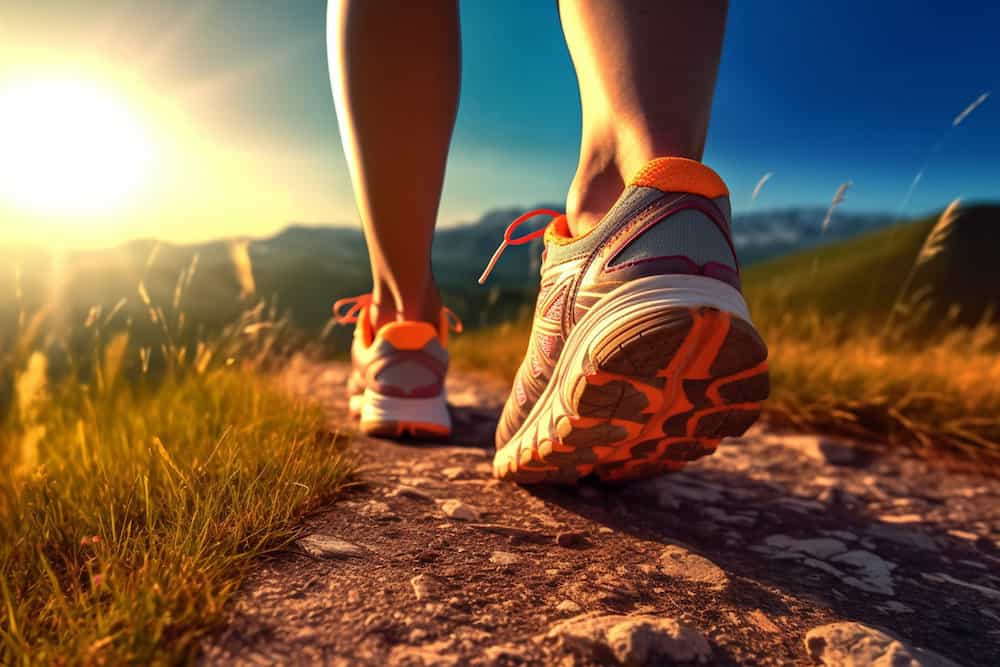
Trying and Testing the Trail Running Shoes
Trying and testing trail running shoes before making a purchase is vital for trail runners seeking optimal performance and comfort on unpredictable terrains. Here’s what you need to do to put your shoes to the test:
Visit Specialty Running Stores
Specialty stores offer a treasure trove of expertise and a chance to engage with passionate staff who understand the unique needs of trail runners. Their guidance can help you navigate the vast array of options and find the perfect fit for your adventurous feet.
Do In-Store Gait Analysis
Gait analysis in-store allows professionals to analyze your running style, foot strike, and pronation. This personalized assessment ensures you select shoes that match your natural movement, minimizing the risk of discomfort and injuries during trail runs.
Test Shoes on Different Terrain Surfaces
Taking the shoes on a test run over diverse terrains mimics real trail conditions, revealing how they handle rocky, muddy, or technical paths.
As you can imagine, this firsthand experience empowers you to gauge the shoe’s traction, stability, and responsiveness, ensuring they harmonize perfectly with your trail preferences.
Compare Multiple Models
Every shoe model is a unique melody, offering distinct features and characteristics. By comparing multiple pairs, you gain insights into various options, fine-tuning your choices until you find the harmonious pair that resonates with your trail-running soul.
In turn, you’ll find the shoes that elevate your performance, propel your passion, and make your trail adventures an ode to the boundless beauty of the wilderness.
Budgeting and Price Considerations
Now that you know how to buy trail running shoes, it’s time to discuss another important consideration: money.
Budgeting wisely allows you to invest in a pair of trail running shoes that not only support your passion but also keep your finances in check. Here’s what you need to do to ensure you don’t spend a little too much on your trail running shoes or too cheap shoes that won’t last long:
Set a Budget
Trail running shoes come in a wide price range. Setting a budget beforehand helps you narrow down your choices, preventing impulsive purchases that may not suit your needs.
Evaluate the Price-to-Performance Ratio
Assessing the shoe’s features and performance relative to its price ensures you get the best value for your hard-earned money. Look for shoes that strike the perfect balance between quality and cost.
Identify Seasonal Sales and Discounts
Keep an eye out for seasonal sales and discounts. These offer an opportunity to snag high-quality shoes at a more affordable price, making your trail adventures even sweeter without compromising quality.
Conquering Trails With the Best Trail Running Shoes
Selecting the right trail running shoes is the key to unlocking the full potential of your journey. So, always remember the vital points:
- Prioritize proper fit, cushioning, and support levels.
- Consider stability features and responsiveness.
- Test the shoes on various terrains and compare multiple models
Let your feet lead the dance, and with the perfect pair, you’ll glide through nature’s symphony with grace and confidence.
As you embark on this thrilling quest with zeal, let the trails witness the harmonious union between your passion and the shoes that echo your every step. Embrace the joy of trail running with the shoes that resonate with your soul and conquer the untamed trails like the maestro of your own symphony.
Happy trails!

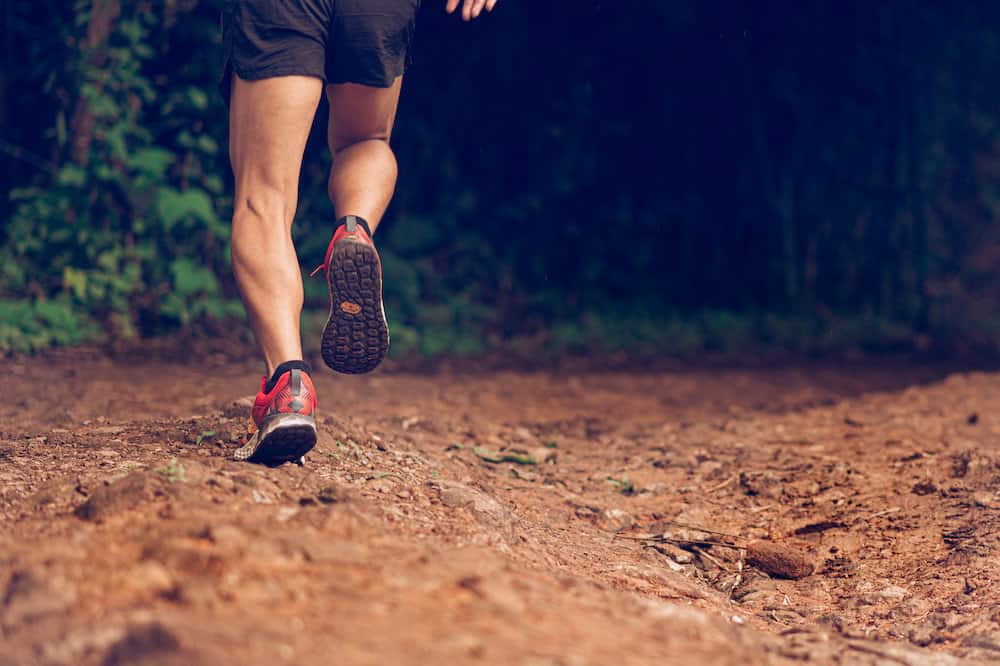
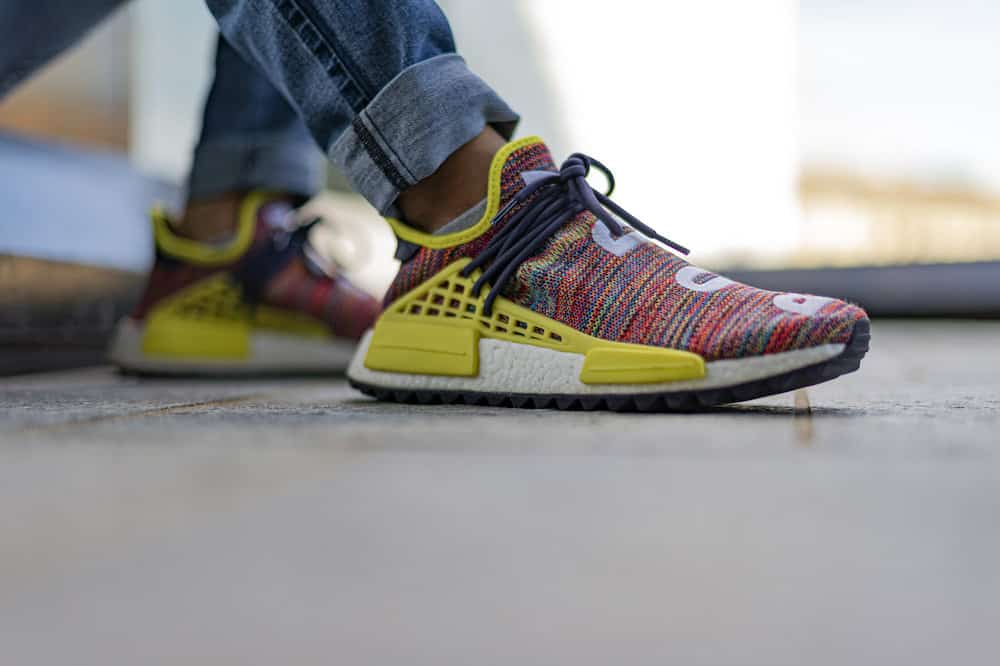

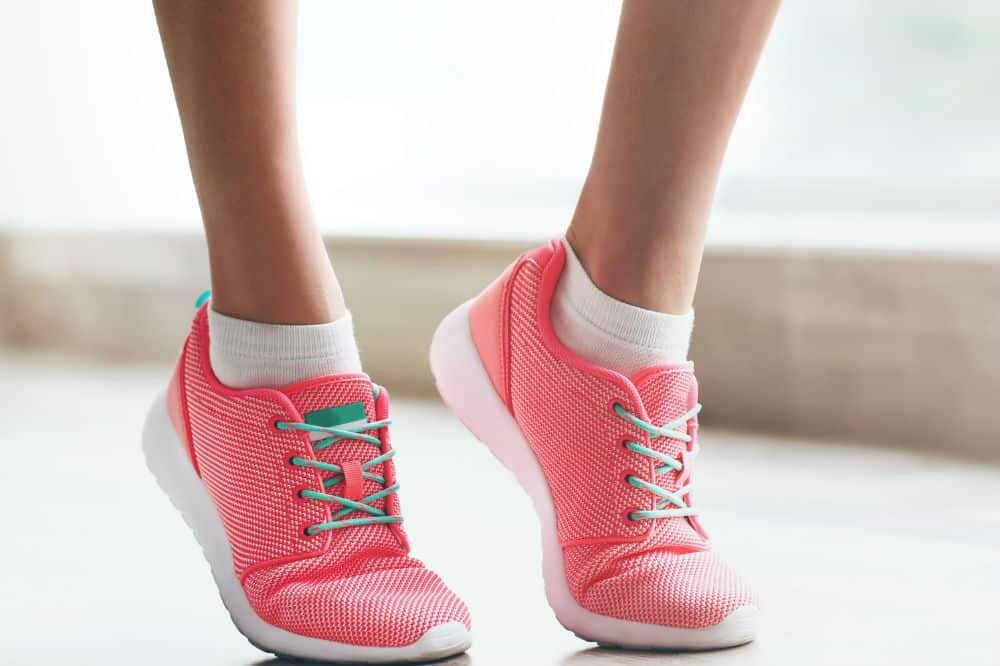

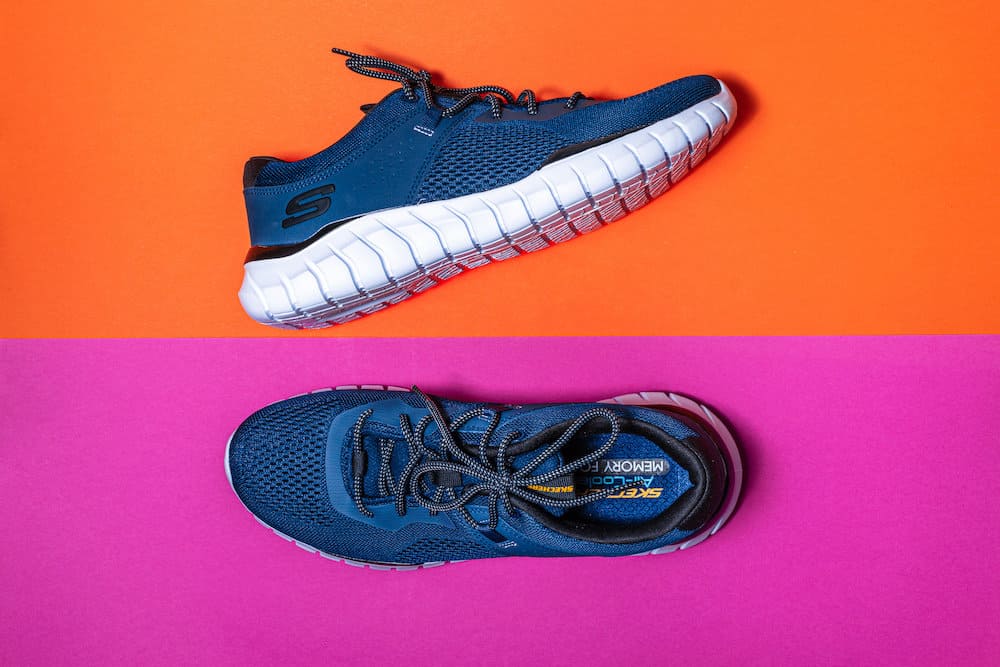
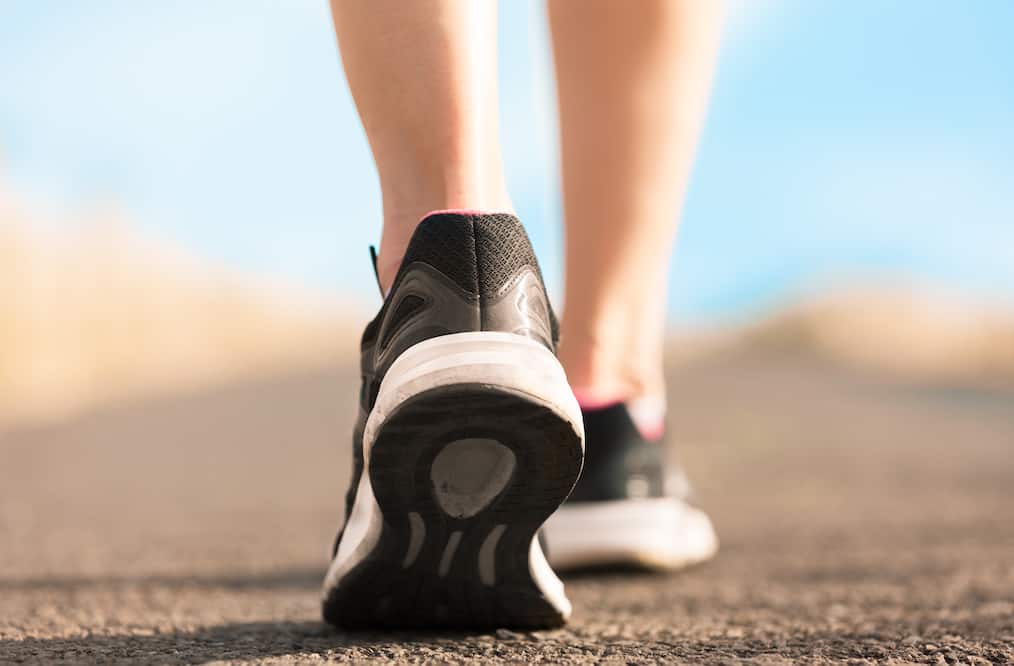






Exploring the world of trail running shoes is an adventure in itself! The detailed guide you’ve provided on how to make the right purchase is incredibly informative. As someone new to trail running, I’m curious: are there specific features or factors to consider when choosing shoes for different types of terrains? Your expertise would be greatly appreciated as I gear up for my own trail running journey.
Hi, Kiersti, and thank you.
Thank you for your kind words.
You ask if it is specific features or factors to consider when choosing shoes for different terrains. I see you are thinking about trail running. Have fun be the way as it is a great way to be fit and get all from nature!
But we wrote about running in different terrains in this article. And there is a lot of information which you would like to know about and answer the question too.
It’s great to hear about the benefit of the article, too.
Don’t hesitate to contact me to help you with anything else or if you have any questions.
Thanks so much for this information on trail running shoes as I am currently in the market for a pair of new running shoes. Proper fit and support are always high on my priority list but I appreciate the additional information as to the other features such as cushioning and stability. I will be sure to test a variety of models on various terrains based on your insights.
Hi, Joseph Stasaitis, and thank you.
Thank you for your kind words.
As you are looking for trail running shoes, I believe you would like to read this article as there are some good ideas there!
It’s great to hear about the benefit of the article, too.
Don’t hesitate to contact me to help you with anything else or if you have any questions.